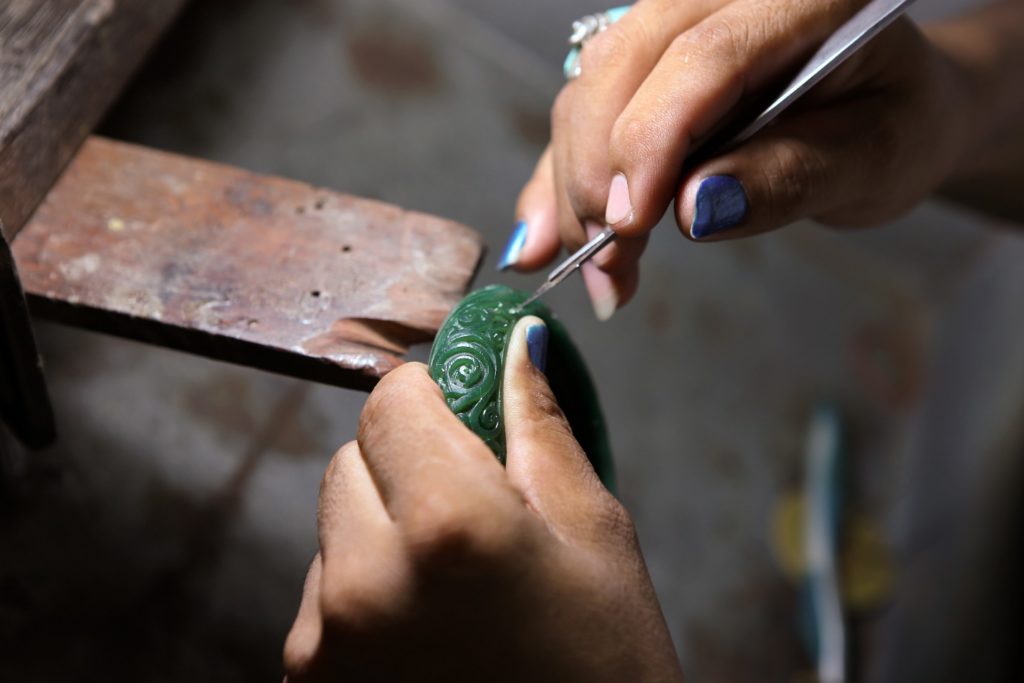Exploring How Jewelry is Made – The Lost Wax Method

Creating treasured pieces is what starts many a young jeweler on the path to running their own business. This time around on the Stewart Kuper Jewelers blog, we wanted to take a peak behind the curtain or into the workshop of a jeweler and tell you the basics of how jewelry is made! If you’ve ever wondered how that ring is made so perfectly circular, or precious stones are placed in pendants, this is the blog for you! This time we’ll look specifically at the lost wax method.
How Jewelry is Made
It All Starts with a Sketch
No matter the method, all pieces begin their life as a sketch. Whether it’s rough or minutely detailed, the sketch on paper is used to get the idea out there and begin the process. If the jeweler is working with a customer, this sketch is used for approval, going back and forth with changes major and minor to detail just want they are looking for. It’s best to get all the experimenting out of the way during this stage. It’s still possible later but paper and lead are much cheaper a material than gold and diamond.
Wax Carving – The Lost Wax Method
One of the most common techniques for crafting jewelry is a process using wax carving. That might surprise you, that the glamorous gold and gemstone pieces begin as a substance as simple as wax, but in many cases it’s the truth!
In this method, jewelers and artisans will take their sketch and carve it into a form of wax. Using blades the artisan will carefully carve away at the wax from until a rough approximation of the piece is completed. Using specialized tools the fine work is completed until there is an exact likeness of the piece, only made entirely of wax!
This wax piece is then placed into a metal flask which is then filled with a plaster like substance (investment) that is then left to harden. Once the investment has fully hardened, now it’s time for cooking! The flask is placed in an oven and fired at an incredible heat that melts away the wax sculpture completely, leaving a mold in its place. This is where the ‘lost wax’ method gets its name.
Filling the Mold
With the mold now empty of its wax precursor, the flask can be filled with molten gold, platinum, or what have you, creating the piece of precious metal where once there was simple wax!
Breaking the Mold, Polishing the Gold
After the molten metal has been allowed to cool and harden, the plaster is broken away to reveal the precious piece. It’s not ready for wear and display just yet! The metal will be a rough, unfinished version of that final piece. Now the jeweler will step in with their polishing tools to smooth the surfaces and bring light and luster to it.
Setting the Stone
When the metal has hardened, been polished to its true splendor, it is then time to set the stones. Jewelers will use fine, precise tools and crafting skills to ensure the stones sit securely in the setting and that they are perfectly positioned.
This is just one of the methods used for crafting jewelry! The process has evolved over thousands of years of jewelry, from simple wire twisting bands to the complex melting and crafting processes of today. Some of them, like the lost wax method, have been tried and true for thousands of years (the oldest example is a 6,000 year old amulet!) and sees frequent use in jewelers’ workshops across the globe.
Ready to craft your dream piece? Reach out and schedule an appointment with Stewart Kuper today, together we can ensure you get your perfect prize.


